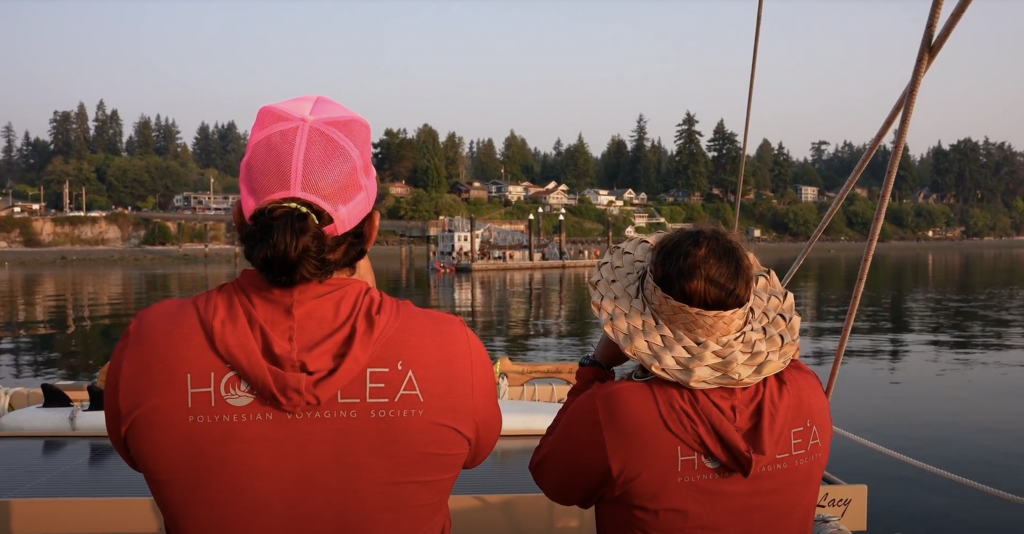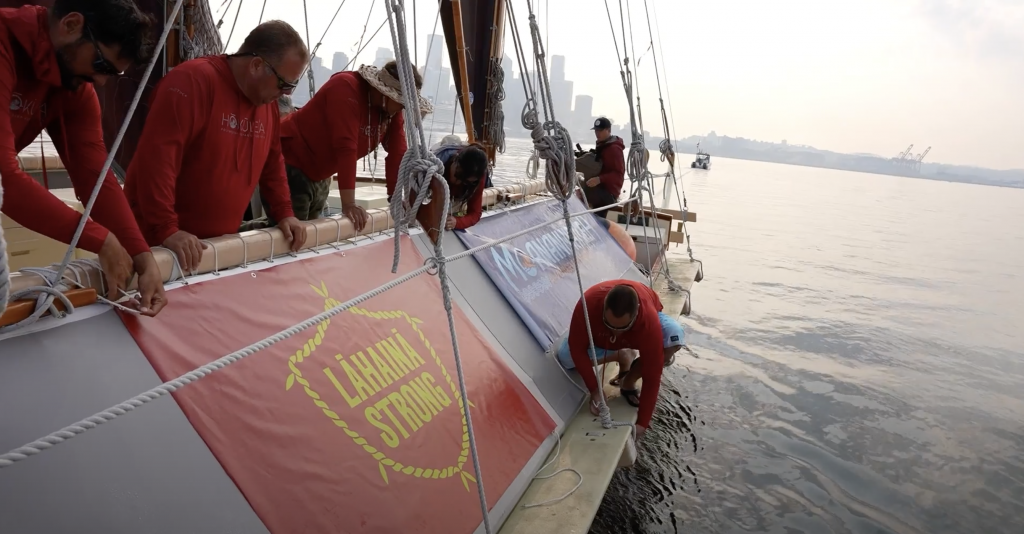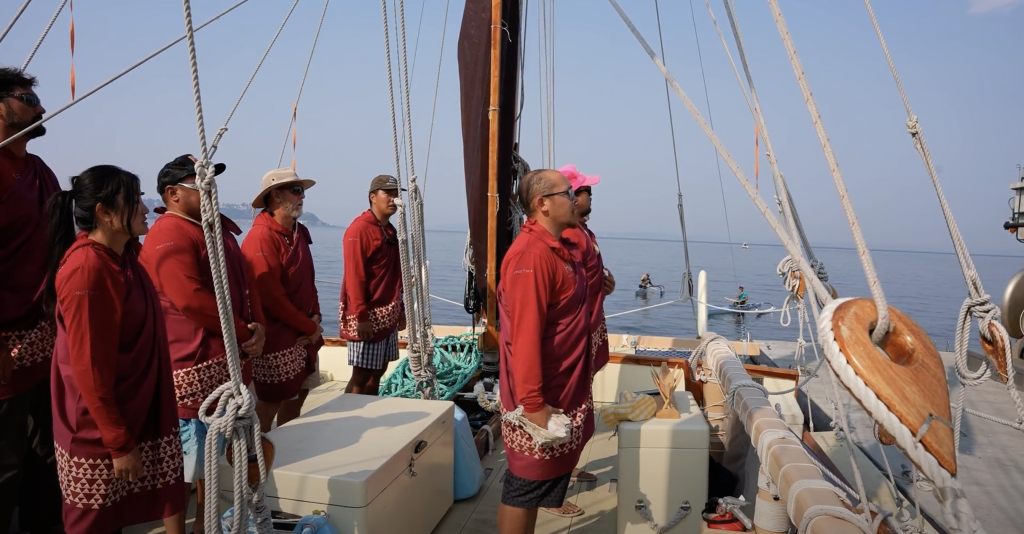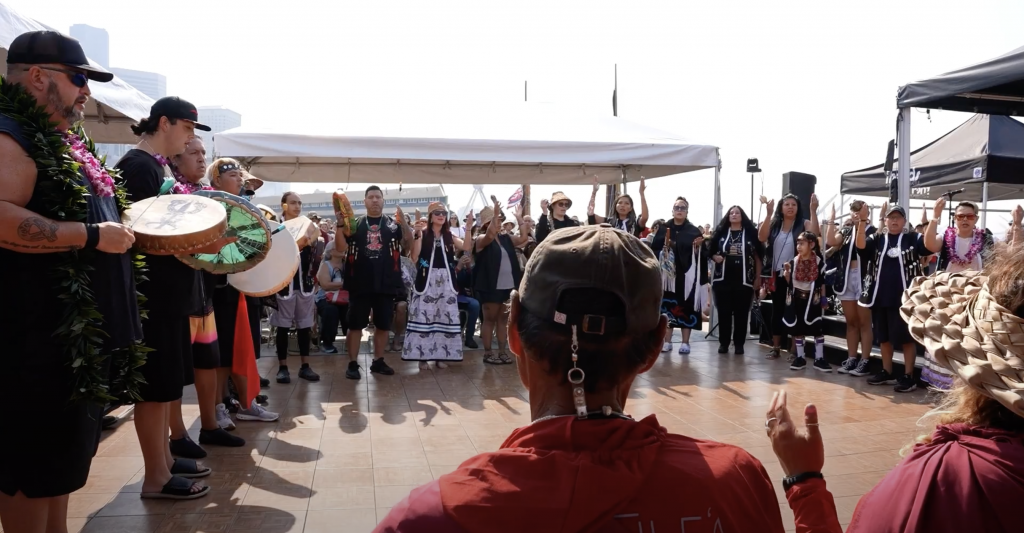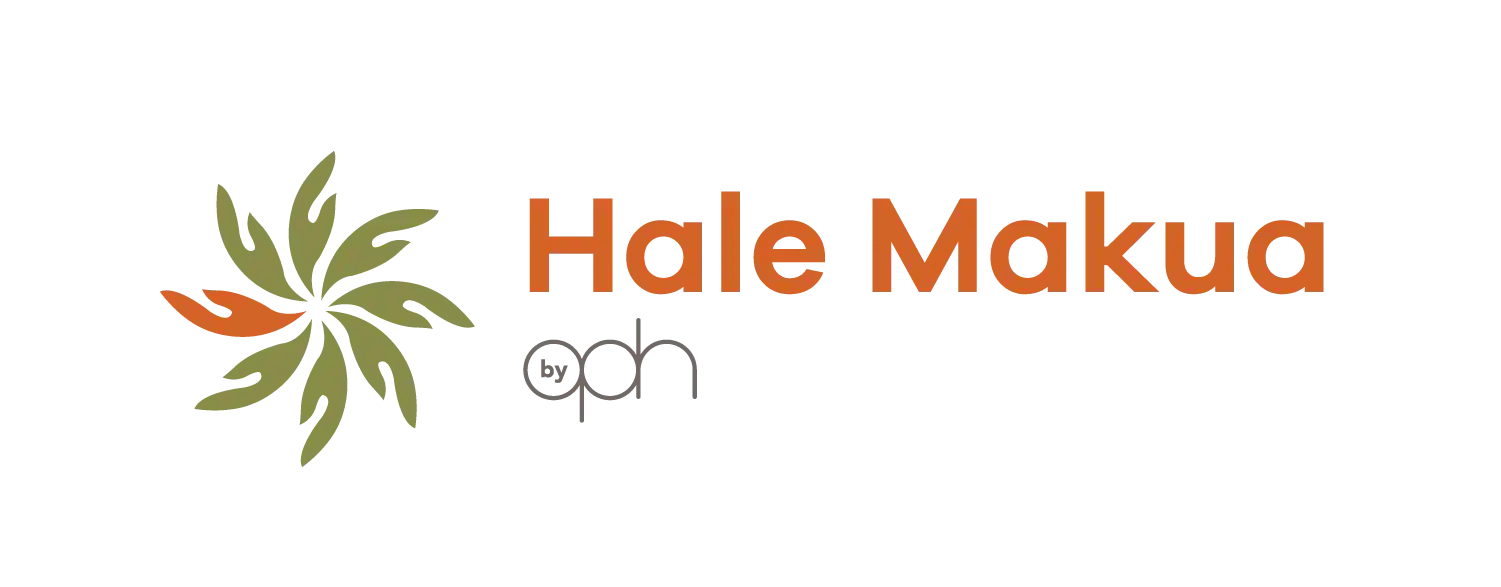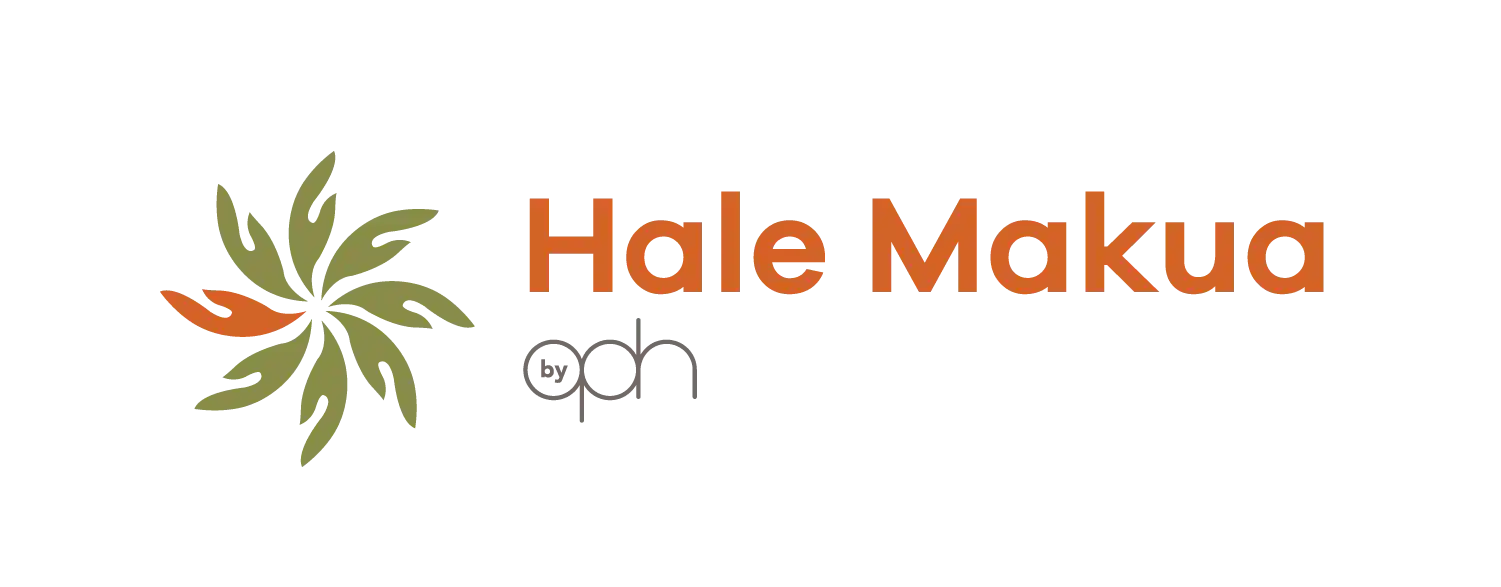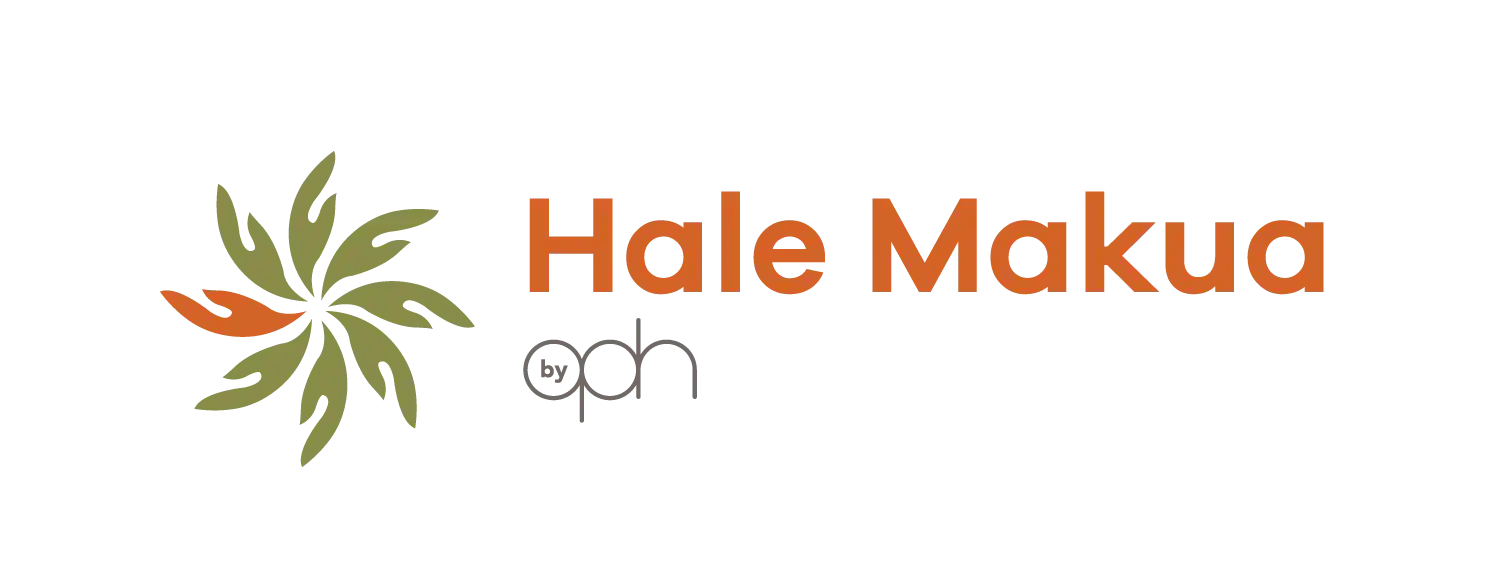Hōkūleʻa crew pays tribute to Lahaina: “We voyage with Maui in our hearts.”
More than 2,000 people gathered at Pier 62 on Saturday to welcome legendary voyaging canoe Hōkūleʻa and her crew to Seattle, Washington.
The people of Lahaina and the rest of Maui were on the forefront of everyone’s minds as Hōkūleʻa symbolizes hope and resilience to many of the Native Hawaiian community who were present at the welcome event. In honor of Lahaina, crew members wore red Hōkūleʻa shirts and red ceremonial kihei.
They also hung special pink feather lei hulu at the top of the mast. Pink is the official color of Maui. Lei hulu serve as indicators of wind speed and direction for the navigator. The color gradient and design of the lei hulu crafted in Hawaiʻi in honor of Lahaina and Maui, tell the tragic story of unspeakable loss and the relentless power of compassion, hope, perseverance and an unwavering devotion to coming together to heal.
The crew also placed over Hōkūleʻaʻs canvas, a “Lahaina Strong” banner created by members of Seattleʻs Native Hawaiian community.
Polynesian Voyaging Society CEO Nainoa Thompson told the gathering “Itʻs hard to be away from home when home needs us the most.” Then he asked them “if we could have a silent prayer for Lahaina, for all that we lost and all that remain, to pray for them and the belief that someday theyʻll be able to go back home and rebuild beautiful lives and beautiful families.”
The canoe sailed into Elliott Bay at approximately 8:30 a.m. escorted by several traditional Suquamish canoes and were greeted on the water by the Muckleshoot’s tribal canoes and dozens of Hawaiian outrigger paddling canoes.
Before coming to shore, the Suquamish and Muckleshoot tribes conducted a traditional tribal water welcome while the City’s fire boat signaled the historic event with a special water works display. After the flotilla of canoes paddled in and Hōkūleʻa docked at Pier 62, a welcoming ceremony continued at the waterfront hosted by the tribal nations, City of Seattle and the area’s Hawaiian community.
The Hōkūleʻa crew signaled the start of Hawaiʻi Protocol with the blowing of the pū, singing, chants and the presentation of gifts. Welcome remarks were shared by Chief Leonard Forsman, chairman of the Suquamish Tribe; Willard Bill Jr. and Eileen Richardson of the Muckleshoot Tribe and Fred Felleman, senior commissioner of the Port of Seattle. Respected teacher and beloved matriarch of Seattle’s Hawaiian community, Kumu ʻIwalani Christian performed a special hula Eia Hawaiʻi, which recounts the 12th century voyage of Chief Moʻikeha from Tahiti to Hawaiʻi.
Hōkūleʻa will remain in Seattle for a four day engagement, which will include public canoe tours at Bell Harbor Marina, as well as talks and presentations at the Seattle Aquarium, Patagonia, and the Burke Museum. Visit www.hokulea.com for updates on public events).
Weather permitting, Hōkūleʻa is scheduled to depart Seattle for Tacoma on Wednesday, August 30, and will arrive at noon for a welcome ceremony at the Foss Waterway Seaport Museum.
Hōkūleʻa’s Seattle engagement has been organized and hosted by the Suquamish Tribe, Muckleshoot Indian Tribe, Port of Seattle, Friends of the Waterfront Seattle, Visit Seattle, and others. Tacoma planning efforts involve the Puyallup Tribe, the Foss Waterway Seaport Museum, and a host of volunteers including Hawaiian and Pacific Islander performers. Overall coordination for both cities was provided by the Seattle-Tacoma Community of Kānaka, Hawaiʻi-affiliated groups, the outrigger canoe community, and supporters of Hōkūleʻa.
Hōkūleʻa has been sailing from Southeast Alaska since the Polynesian Voyaging Society (PVS) held its global launch of Moananuiākea, the four-year circumnavigation of the Pacific, in Juneau, Alaska on June 15, 2023. The canoe and her crews sailed south through British Columbia engaging with First Nations communities, before arriving in Seattle.
The Moananuiākea Voyage, led by PVS, will cover an estimated 43,000 nautical miles around the Pacific, visiting 36 countries and archipelagoes, nearly 100 indigenous territories and more than 300 ports.

The goal of the voyage is to ignite a movement of 10 million “planetary navigators” by developing young leaders and engaging communities around the world to take part in navigating earth towards a healthy, thriving future. The voyage itself is a global educational campaign that will amplify the vital importance of oceans and indigenous knowledge through port engagements, education and storytelling shared via a virtual “Third Canoe” called Waʻa Honua, which translates to “a canoe for the earth” (www.waahonua.com).





